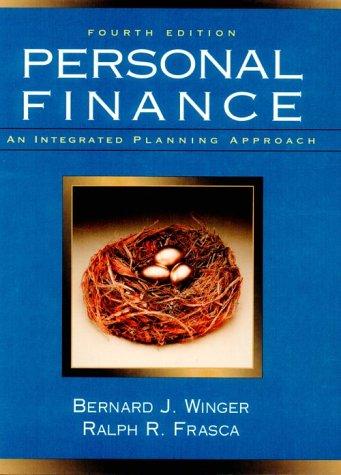Answered step by step
Verified Expert Solution
Question
1 Approved Answer
12) The three key roles of financial management are 25) Issuance of new shares to existing shareholders is termed: a. Financing, structure and dividend b.

12) The three key roles of financial management are 25) Issuance of new shares to existing shareholders is termed: a. Financing, structure and dividend b. Financing, invosting and dividend c. Financing, equity and debt. d. Equity, debt and investing. a. Re-lssue b. Initial Public Offering c. Private issue e. Shareholders issue 13) Which of the following is most consistent with maximising shareholder wealth? 26) Return on investment of 17.65% implies that 4. Seeking projects with positive NPV a. Profits were 17.65% higher than total assets. b. Profit maximisation b. There was 17.65% return on its investment in assets. c. Minimising the firm's cost of capital c. Profits make up 17.65% of total assets. d. Maximising earnings per share d. The company is performing well. e. None of the above. 14) Which of the following statements about investment decision making methods 27) Capital Budgeting is a part of: is true? a. Investment Decision. i1. The payback method ignores all cash flows after the end of the payback c. Marketing Management. b. The net present value rule is to accept investment opportunities when d. Capital Structure. their rates of return exceod the company's welghted average cost of . Financing Decision. Capital is greater than the IRR d. The discounted payback method takes into account cash flows for all periods e. None of the above 15) Which of the following is an advantage of the net present value method? a. It accounts for compounding of returns b. It is measured in time, not value c. It uses accrual basis, not cash basis accounting for a project d. If uses the accounting rate of return 28) Which of the following are money market instruments? 1. Certificate of deposit 2. Corporate bond 3. Commercial paper e. None of the above 16) Which of the following securities has the least amount of default risk? a. Treasury bills b. Corporate bonds c. Commercial paper d. Cortificate of deposit c. Bills of exchange 17) Which of the following is a difference between primary and secondary capital market? a. Primary markets are where stocks trade and secondary markets are where loan notes trade b. Primary capital markets relate to the sale of new securities, while secondary capital markets are where securities trade after their initial offering. c. Both primary and secondary capital markets relate to where securities are traded after their initial offering. d. Both primary and secondary capital markets relate to the sale of new securities c. None of the above 2 and 4 only b. 1 and 3 only c. 1,3 and 4 only d. 1 and 2 only 29) In capital budgeting, the term Capital Rationing implies: a. That no retained earnings available for investment b. That limited funds are available for investment c. That no extemal funds can be raised for investment e. That there is no budget in use. 30) If the Money Discount Rate is 19% and Infiation Rate is 12%, then the Real Discount Rate is: a. 7% c. 5.70% d. 6.25% 31) Cost of Capital refers to; a. Flotation Cost b. Cost of equity c. Rate of Return d. Cost of funds e. Falr rate of return 32) Angel Company Limited, a small and medium enterprise, is in need of capital for growth and expansion. The company has approached Mr. Kankam, a business angel with keen interest in the industry the company operates. Angel is asking Mr. Kankam to offer them GH50,000 for a 20% stake in their business. Based on Angel's offer, what is the estimated value of Angel Company Limited? a. GH&200,000 b. GH\&225,000 c. GH,250,000 d. GH4275,000 c. GH4300,000 33) Assuming, a company has outstanding shares in the company of 20,000 and the company's dividends to its present owners for the current year is GHE1.00 expected to grow at a stable rate of 6% annually, and the current cost of equity is 14%, using the constant growth dividend discount model, what would be estimated value of the company? a. GHe190,000 b. GH235,000 c. GHc240,000 d. GHt265,000 e. GHe290,000 Use the information below to answer questions 34 to 37 Suppose Angel Company is partly financed by 500 outstanding 15 year bonds, each with face value of GH1,000 with an annual coupon rate of 8% and Yleld to Maturity of 10%. Equity shares outstanding of 20,000 with dividends per share of GH0.75, growth rate of 8%. Also suppose the market return on 1 year Govemment notes is 15% whereas 91 -day T-bill is 10%, and the current market returns for risky assets is 24%. Angel Company has a beta of 0.8. 34) What is the after-tax cost of debt for Angel Company? a. 10% c. 8% d. 15% c. 24% 35) What is the fair market return for Angel's equity holders? a. 14.0% b. 24.0% c. 22.2% d. 21.2% e. 23.2%
Step by Step Solution
There are 3 Steps involved in it
Step: 1

Get Instant Access to Expert-Tailored Solutions
See step-by-step solutions with expert insights and AI powered tools for academic success
Step: 2

Step: 3

Ace Your Homework with AI
Get the answers you need in no time with our AI-driven, step-by-step assistance
Get Started


